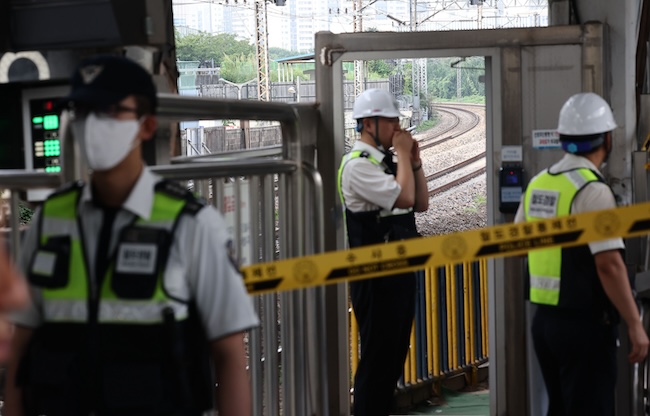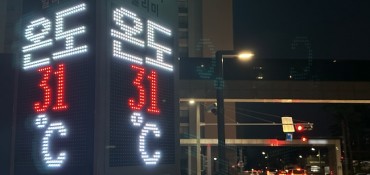
Emergency rooms are preparing for a potential overflow during the upcoming Chuseok holiday. (Image courtesy of Yonhap)
SEOUL, Aug. 27 (Korea Bizwire) – As South Korea’s healthcare system grapples with a six-month-long medical vacuum, emergency rooms are preparing for a potential overflow during the upcoming Chuseok holiday.
The convergence of COVID-19 cases, heat-related illnesses, and the traditional holiday rush is raising concerns about the capacity of already strained emergency services.
The Ministry of Health and Welfare reports that during the Chuseok holiday in 2022, patient visits to 166 regional emergency medical centers surged to approximately 90,000, averaging about 23,000 per day.
On the holiday itself and the day after, visits peaked at 25,000 and 24,000 respectively, nearly doubling the typical weekday numbers.
National Fire Agency records corroborate this trend, showing that daily 119 emergency calls during the holiday period averaged 6,926, a 40% increase from the regular daily average of 4,980.
While the influx of patients is significant, officials and medical professionals agree that most cases are non-critical.
However, the holiday also brings a spike in certain emergencies. Compared to annual averages, Chuseok sees triple the number of burn cases, 2.4 times more penetrating injuries, and a 50% increase in traffic accidents.
The real challenge lies in the shortage of emergency room staff. A professor at a Seoul regional emergency medical center, who requested anonymity, stated, “Most patients during Chuseok have minor symptoms. They come to the ER because they’re unsure of their condition and other clinics are closed.”
The ongoing healthcare crisis has exacerbated the staffing shortage. As of mid-August, emergency room visits were at 111% of pre-crisis levels, with a number of doctors resigning due to the heavy workload.
The situation has spread from regional areas to the capital, with major hospitals facing significant staff reductions.
For instance, Ajou University Hospital’s emergency room, which originally had 14 emergency medicine specialists for adult patients, has seen three resignations accepted during the ongoing medical dispute.
Recently, four more of the remaining doctors have submitted their resignations.
This shortage has led to instances of “ER hopping,” where critical patients are shuttled between hospitals seeking available care.

A recent subway accident in Seoul on August 9 highlighted this issue when an injured worker spent 16 hours being transferred between hospitals before receiving necessary surgery. (Image courtesy of Yonhap)
A recent subway accident in Seoul on August 9 highlighted this issue when an injured worker spent 16 hours being transferred between hospitals before receiving necessary surgery.
Despite arriving at the scene within 10 minutes, the 119 rescue team was unable to admit the patient to the nearby Korea University Guro Hospital’s severe trauma center.
The patient was then taken to the National Medical Center, which later requested a transfer due to the lack of an orthopedic specialist for the required femur fracture surgery.
The patient was subsequently moved to Seoul Yonsei Hospital in Mapo-gu for head wound suturing, but again transferred to One Top Hospital in Gangseo-gu, where surgery was finally performed 15 hours and 51 minutes after the accident.
According to data obtained by Kim Seon-min, a member of the National Assembly’s Health and Welfare Committee, over 1,000 patients experienced “ER hopping” due to the absence of specialists in the first half of this year alone.
Out of 2,645 cases of 119 re-transfers, 40.9% (1,081 cases) were due to the absence of specialists.
Ihn Namkoong, a professor of emergency medicine at Ewha Womans University Mokdong Hospital, a regional emergency medical center in southwest Seoul, shared, “With all the residents having resigned and several specialists having left, I sometimes work alone during shifts at our center, which typically sees about 60 patients a day.”
Despite these challenges, medical professionals assure that the principle of prioritizing severe cases remains unchanged.
An emergency medicine professor in the capital region emphasized, “Doctors will always treat critical patients first, minimizing life-threatening situations.”
As the holiday approaches, authorities are urging the public to be patient and understanding.
“While we can’t turn away patients with minor symptoms, as seemingly minor symptoms can sometimes indicate serious conditions, those with less urgent conditions should be prepared for longer wait times,” the professor added.
M. H. Lee (mhlee@koreabizwire.com)






